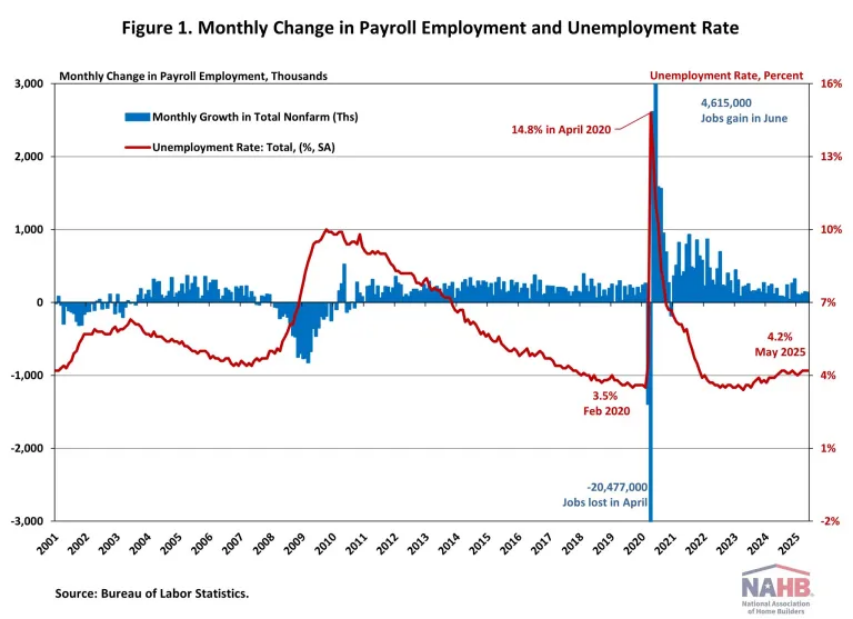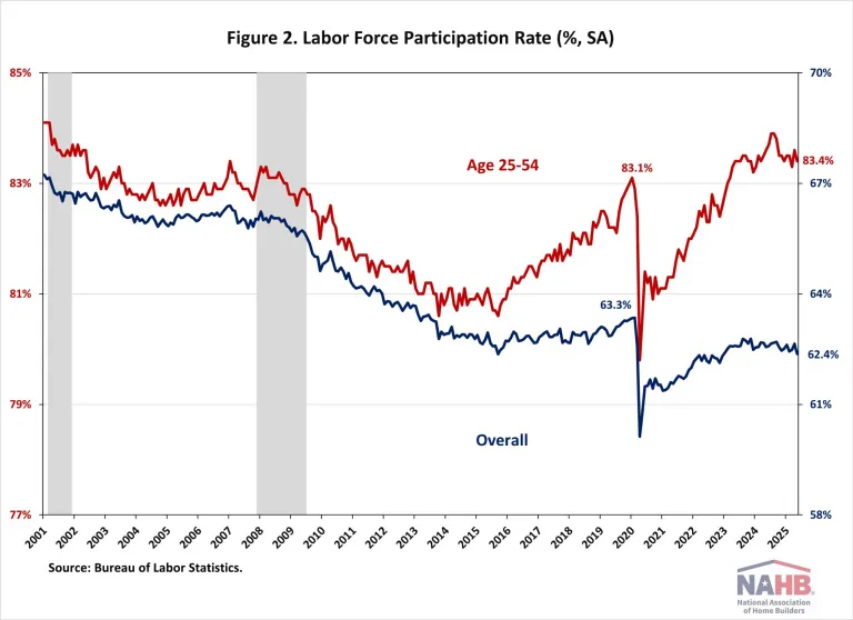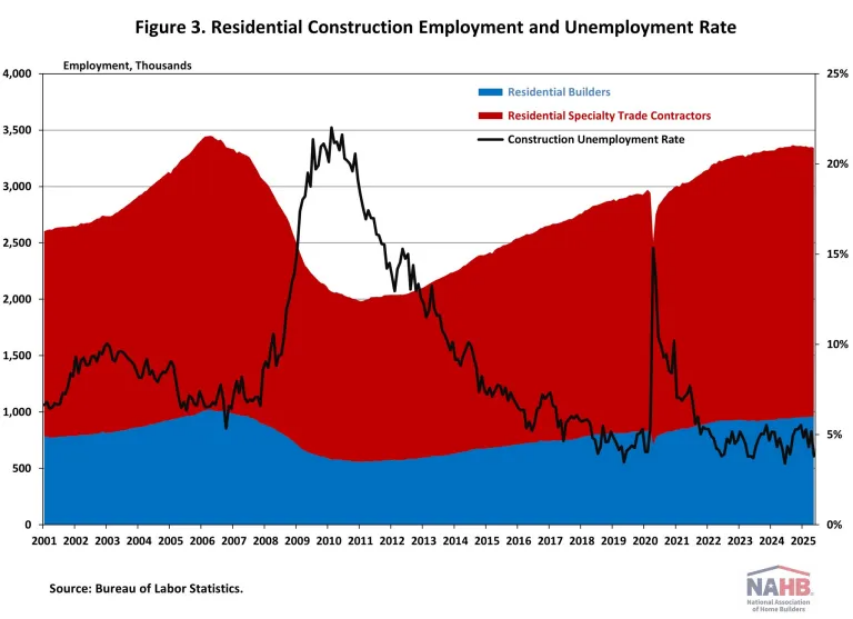Overall Construction Employment Rises Slightly in May
Originally Published by: Eye on Housing — June 6, 2025
SBCA appreciates your input; please email us if you have any comments or corrections to this article.
Despite ongoing economic and policy uncertainty, the labor market remains resilient, though early signs of softening are beginning to emerge. Job growth moderated in May, and employment figures for March and April were notably revised downward. The unemployment rate remained at 4.2%.
In May, wage growth remained unchanged. Year-over-year, wages grew at a 3.9% rate. Wage growth has been outpacing inflation for nearly two years, which typically occurs as productivity increases.
National Employment
According to the Employment Situation Summary reported by the Bureau of Labor Statistics (BLS), total nonfarm payroll employment rose by 139,000 in May, following a downwardly revised increase of 147,000 jobs in April. Since January 2021, the U.S. job market has added jobs for 53 consecutive months, making it the third-longest period of employment expansion on record. Monthly employment growth has averaged 124,000 per month in 2025, compared with the 168,000 monthly average gain for 2024.
The estimates for the previous two months were revised down. The monthly change in total nonfarm payroll employment for March was revised down by 65,000 from +185,000 to +120,000, while the change for April was revised down by 30,000 from +177,000 to +147,000. Combined, the revisions were 95,000 lower than previously reported.
The unemployment rate remained unchanged at 4.2% in May. Despite this stability, the overall labor force shrank with notable shifts. The number of employed persons decreased by 696,000, while the number of unemployed persons increased by 71,000.
Meanwhile, the labor force participation rate—the proportion of the population either looking for a job or already holding a job—decreased two percentage points to 62.4%. The overall labor force participation rate remains below its pre-pandemic levels of 63.3% at the beginning of 2020. Among individuals aged 25 to 54, the participation rate declined two percentage points to 83.4%. The rate for the prime working-age group (25 to 54) has been trending downward since peaking at 83.9% last summer. 
In May, industries like health care (+62,000), leisure and hospitality (+48,000), and social assistance (+16,000) continued to see gains. Meanwhile, federal government lost 22,000 jobs in May and has shed 59,000 jobs since January 2025, reflecting the effects of government cutbacks. The BLS notes that “employees on paid leave or receiving ongoing severance pay are counted as employed in the establishment survey.”
Construction Employment
Employment in the overall construction sector rose by 4,000 in May, following a downwardly revised gain of 7,000 in April. While residential construction lost 7,400 jobs, non-residential construction employment added 11,300 jobs during the month.
Residential construction employment now stands at 3.3 million in May, broken down as 963,000 builders and 2.4 million residential specialty trade contractors. The six-month moving average of job gains for residential construction was -2,617 a month, reflecting job losses recorded in three of the past six months, specifically in January, March, and May of 2025. Over the last 12 months, home builders and remodelers experienced a net loss of 1,000 jobs, marking the first annual decline since September 2020. Since the low point following the Great Recession, residential construction has gained 1,360,600 positions.
In May, the unemployment rate for construction workers declined to 3.8% on a seasonally adjusted basis. The unemployment rate for construction workers has remained at a relatively lower level, after reaching 15.3% in April 2020 due to the housing demand impact of the COVID-19 pandemic. 
